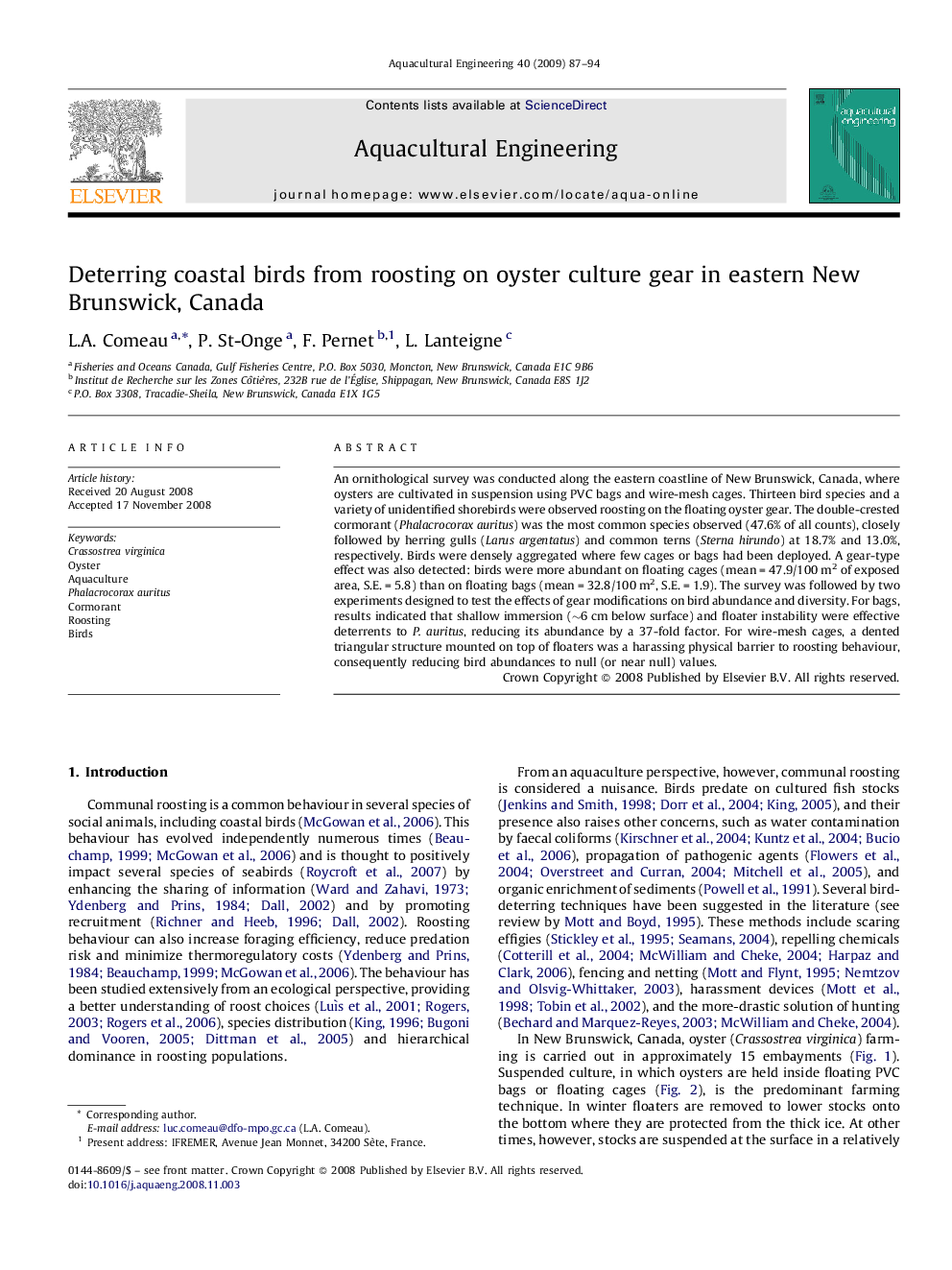| Article ID | Journal | Published Year | Pages | File Type |
|---|---|---|---|---|
| 6381531 | Aquacultural Engineering | 2009 | 8 Pages |
Abstract
An ornithological survey was conducted along the eastern coastline of New Brunswick, Canada, where oysters are cultivated in suspension using PVC bags and wire-mesh cages. Thirteen bird species and a variety of unidentified shorebirds were observed roosting on the floating oyster gear. The double-crested cormorant (Phalacrocorax auritus) was the most common species observed (47.6% of all counts), closely followed by herring gulls (Larus argentatus) and common terns (Sterna hirundo) at 18.7% and 13.0%, respectively. Birds were densely aggregated where few cages or bags had been deployed. A gear-type effect was also detected: birds were more abundant on floating cages (mean = 47.9/100 m2 of exposed area, S.E. = 5.8) than on floating bags (mean = 32.8/100 m2, S.E. = 1.9). The survey was followed by two experiments designed to test the effects of gear modifications on bird abundance and diversity. For bags, results indicated that shallow immersion (â¼6 cm below surface) and floater instability were effective deterrents to P. auritus, reducing its abundance by a 37-fold factor. For wire-mesh cages, a dented triangular structure mounted on top of floaters was a harassing physical barrier to roosting behaviour, consequently reducing bird abundances to null (or near null) values.
Related Topics
Life Sciences
Agricultural and Biological Sciences
Aquatic Science
Authors
L.A. Comeau, P. St-Onge, F. Pernet, L. Lanteigne,
